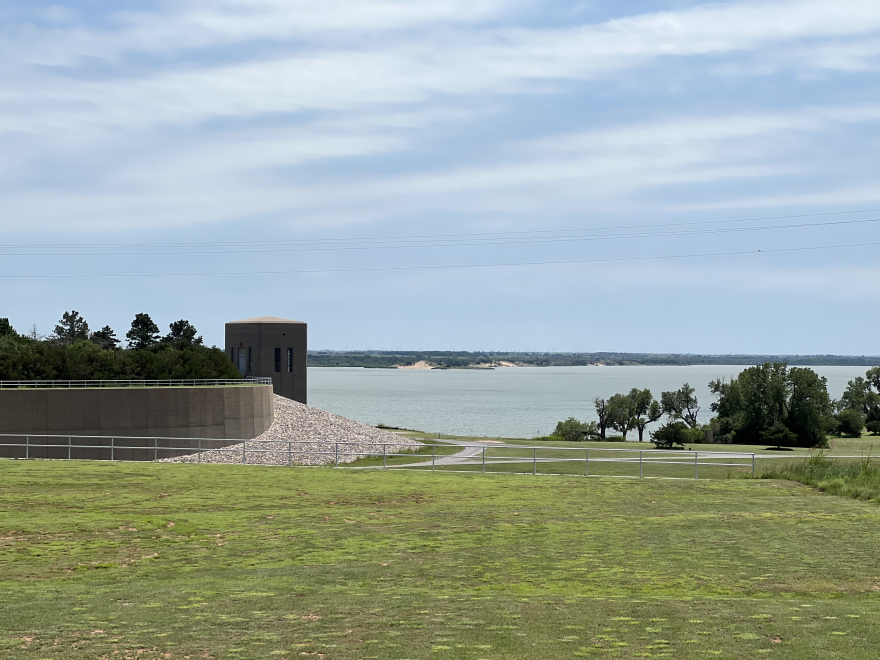Although the water board has been making comprehensive plans about once a decade since 1975, it didn’t have much funding for studies and public surveys until the most recent one in 2012.
That plan focused on identifying the water issues that mattered most to Oklahomans, according to OWRB Planning Director Owen Mills. But for the 2025 plan, Mills hopes to focus beyond the problems themselves.
“We've heard a lot about ‘the what,’” Mills said. “Now we kind of need to talk about ‘the how’ — how are we going to deal with the issues that people see? So that takes a much deeper dive, a much more serious conversation.”
The 2012 plan spurred studies with the U.S. Geological Survey about the quality and availability of groundwater in Oklahoma’s aquifers. Equipped with those findings and new U.S. Census data, Mills is working to project the state’s water supply and demand over the next 50 years.
“We show those projections for every watershed,” Mills said. “And there's some of those where it gets pretty tight. My hope is that people show up and people want to talk about it and look for creative solutions.”
Implementing solutions will mostly be up to public water systems. But the Comprehensive Plan can provide guidance, data and resources.
Mills said the OWRB would like to do studies on lake yields — how much water can be pulled from a lake without depleting it, especially during drought.
“A town needs to know that,” Mills said. “If their only source of water is that city lake, and they don't know how much water they actually have, it makes it harder for them to plan for the future.”
Water isn’t the only thing the OWRB is looking to conserve over the next 50 years.
“There is a huge, huge looming issue with water treatment operators,” Mills said.
Those specialized employees oversee water treatment plants. Nationwide, about one-third of water operators are expected to retire in the next 10 years. In many small towns and rural water districts, Mills said, the same person holds the position for decades and has no one to inherit all the specific knowledge of their water system.
“It will affect everybody because if these systems aren't run right, that hurts all of us,” Mills said. “Even though it may not be my town, I want safe drinking water for their own people, but also for me and my family when we drive through.”
As the OWRB develops a strategy to address these issues and others, it’s seeking input from people across the state. Oklahomans can take a survey about their water needs and priorities on the board’s website.
Starting in August, the OWRB will host rounds of public input meetings across the state and virtually. Those meetings will start with two hours of discussion meant for local officials and water suppliers (although anyone can attend). Then, the OWRB will take feedback from the public.
“These are supposed to be quarterly, and they'll build on each other,” Mills said. “The idea is that as certain topics rise to the surface, I want to drill down on them.”
To learn more about the 2025 Water Comprehensive Plan or about meetings in your area, you can visit the OWRB’s website. Links to virtual meetings and info about future public input rounds will be sent via email to people who subscribe to Water Comprehensive Plan updates.
Dates and Locations:
For in-person meetings, the discussion for local officials and water personnel begins at 2 p.m., and the discussion for the general public runs from 5:30 - 7:00 p.m.
- August 15 | Southwest Technology Center | 711 W. Tamarack Rd., Altus, OK 73521
- August 16 | Chickasaw Nation Community Center | 700 N. Mississippi Ave., Ada, OK 74820
- August 17 | Rogers State University | 1701 W. Will Rogers Blvd., Claremore, OK 74017
- August 29 | High Plains Technology Center | 3921 34th St., Woodward, OK 73801
- August 30 | OSU-Oklahoma City | 9900 N. Portland Ave., Oklahoma City, OK 73107
- August 18 | Virtual meeting, 9:00 – 11:00 a.m.
- August 31 | Virtual meeting, 1:00 – 3:00 p.m.







